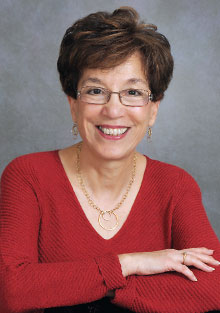What Is AACAP’s Roadmap for 2021?
Abstract
The session will touch on the American Academy of Child and Adolescent Psychiatry’s work around emotion dysregulation, inpatient psychiatric bed issues, workforce shortages, and promoting health equity.
In 2021, the American Academy of Child and Adolescent Psychiatry (AACAP) will focus on four key initiatives that span a variety of issues. “For this opportunity to present at APA, I wanted to select current topics that are very important to those of us who work in child psychiatry,” said Gabrielle Carlson, M.D., AACAP president and a professor of psychiatry and pediatrics at the Renaissance School of Medicine at Stony Brook University. The initiatives include the following:

Gabrielle Carlson, M.D., and her colleagues at the American Academy of Child and Adolescent Psychiatry will discuss the status of four important initiatives during the APA Annual Meeting session.
Emotion dysregulation: The first talk will address Carlson’s AACAP presidential initiative titled “Emotion dysregulation in children and adolescents.” It refers specifically to children who, in the face of relatively common frustrations or disappointments, become too angry, too quickly, too often, and for too long. The expression of their distress is usually verbal or physical aggression, though sometimes there are other manifestations of distress. This behavior accounts for about 25% of outpatient, 50% to 75% of inpatient, and one-third of emergency department visits, Carlson explained.
There is no clear diagnosis for children who suddenly get extremely upset, Carlson said. “It’s difficult to quantify how big of a problem this is because we don’t have a label for it,” she said. It also creates problems when those children need inpatient care and insurers refuse to pay without a corresponding diagnosis, for example. Carlson and her presidential task force at AACAP are working to get outbursts coded in DSM-5 as well as compiling what is known about measurement and treatment of the behavior.
Child and adolescent inpatient beds: APA President Jeffrey Geller, M.D., M.P.H., created the Presidential Task Force on the Assessment of Psychiatric Bed Needs in the United States. Recognizing the fact that children and adolescents have somewhat unique issues compared with adults, the task force formed the Child/Adolescent Psychiatry Bed Work Group. The work group’s goal is to create a model akin to the adult model for how many psychiatric beds that communities need specifically for youth. APA Secretary Sandra DeJong, M.D., M.Sc., heads the child work group and will talk about those issues, including the types of beds that are needed and what high-quality inpatient psychiatric care looks like for youth.
Presidential Task Force on Crisis in Recruitment: In recent years, the percentage of child and adolescent psychiatry training programs that are filled each year has ranged from only 51% to 72%, contributing to the ongoing substantial workforce shortage. One potential solution for the problem, Carlson explained, is creating an option to enter a four-year combined residency program for psychiatry and child and adolescent psychiatry. Jeff Hunt, M.D., program director of the child and adolescent psychiatry fellowship and the combined program in pediatrics, psychiatry, and child and adolescent psychiatry at Brown University, will speak about the extent to which there is consensus in the field about the option, what would have to be sacrificed by shortening the training programs, and what would need to be incorporated into the four years of training.
Health equity and combating racism: Having a diverse and inclusive workforce is important for all facets of child and adolescent psychiatry, Carlson explained, and is important to the previous initiatives outlined. “Not only do we need to increase our workforce, but also we need to especially encourage people of color to practice child and adolescent psychiatry,” she said. Inequity must also be addressed in relation to ensuring access to high-quality care for inpatients and youth experiencing emotion dysregulation, she pointed out. AACAP’s Diversity and Culture Committee has developed an action plan, and Lisa Cullins, M.D., one of the leaders of AACAP’s Presidential Working Group to Promote Health Equity and Combat Racism, will discuss some of the initiatives included in the plan. ■
“AACAP’s 2021 Initiatives” will be held Saturday, May 1, from 11:30 a.m. to 1 p.m.



